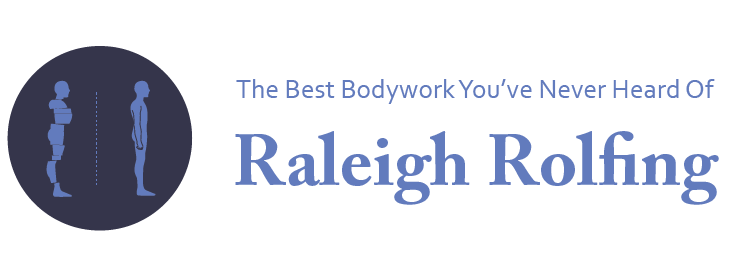In it's idealized form, Rolfing evolved as a modality focused on posture and the potential for a more effortless and enjoyable way to live in our bodies. Over the years, Rolfing has gotten more of a public association with fixing problems and pains that might not have been handled by conventional medicine. So, most often, when someone shows up on the Rolfing table for the first time, it's because something hurts and they've exhausted a number of options already.
One of the common questions with pain is "how long will this take?" and while this is a difficult answer to absolutely pinpoint, the following is a good approximate road map for how clients tend to progress. Everyone's body, circumstances, and experience is different but the following should help you get an idea of what to expect in terms of progression, relief, and healing.
This timeline is written based on a common client type for Raleigh Rolfing which is people who've been in pain for several years and exhausted a number of options with no success to moderate success. If you are coming in not in pain or with more recent injuries, the timeline may potentially be shorter.
Proof of Concept/Getting Comfortable (1-3)
The first three sessions or so tend to involve a lot of newness and figuring out what will work best for your issues and needs. Typically, we will focus on addressing the concerns that brought you into the office and as they begin to move and change, we'll expand out to working with other parts of the body that will support deeper and more lasting work with your primary concerns. Different clients begin to notice shifts at different times, but typically anywhere from the first to third session you should start to be able to feel a noticeable and lasting shift.
Going Deeper (3-6)
Somewhere between the second and fifth sessions, the body tends to become more familiar, comfortable, and open to the process of change and begins letting us work at a deeper level. This means working at a deeper level both physically and metaphorically and getting into more unconscious muscular patterns that shape how we hold ourselves and move. As the work gets deeper, you'll begin to see longer lasting change off the table.
Starting to rewrite normal (5-10)
The overall goal for any client I work with is to help them improve on whatever their "normal" is in their body. While it is inherent to the process from the first session and may be apparent earlier, it seems most clients are solidly aware of this beginning to shift normal somewhere by 5-10 sessions. As your body begins to break out of the patterns that have kept it in pain or discomfort, you can start exploring new ways of moving and holding yourself, consciously and unconsciously.
Self Healing (8+)
This stage is a little harder to predict in terms of timing, but typically between 8-12 sessions or so, you can expect to see your body and nervous system begin orienting to a new and either painless or much lower pain way of being. This means injuries or setbacks will tend to start resolving themselves partially or fully between sessions. Clients at this point begin to find themselves unconsciously taking actions they normally avoided (taking the stairs without thinking about it, for instance).
Ten-Series
One of the strengths of Rolfing is taking the body beyond just feeling OK. At the point where it doesn't routinely hurt to be in your body, The Rolfing Ten Series is my strong recommendation to continue improving things or to begin a long-term maintenance plan. At the point where a client is not in pain, Ten-Series sessions can readily be spaced anywhere from a week to a month apart without too much disruption to the benefit and often with some added benefit to taking one's time through the process, allowing extra time between sessions for exploration, strengthening, and settling into new patterns.
Continuing Maintenace/Projects/As-Needed
Beyond the Ten-Series, Rolfing work can become pretty free-form and oriented to what you want to use it for. For some clients this means only coming back occasionally when they need an extra boost, for some it has meant replacing massage in their self-care regime with Rolfing because they prefer the results, and for others this can mean continuing to go deeper into their bodily patterns to whatever depth they want.
